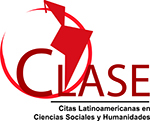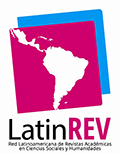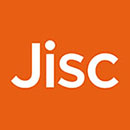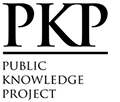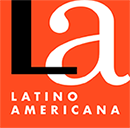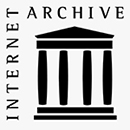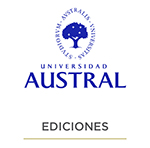Plain Language in Legal Scholarship: Benefits of its Application in Com-munications Among Experts
Abstract
The purpose of this article is to defend the point that it is benefitial to use plain language in communications between experts. It is generally alleged that the basis to use plain language in law is the imbalance between the two extremes of the communicative situation—specialists and nonspecialists. Specialists must write thinking of the intended reader of their texts, with the idea that even people without a legal background should be able to understand. While valid in communications between specialists and nonspecialists, this assumption cannot justify the use of plain language in legal scholarship. Legal scholarship is a communicative situation among specialists or between a specialist and a specialist-to-be, i.e., a student. To show this point, five drafting issues are included which are recurrent in legal scholarship, and alternative wordings in plain language are suggested.
Downloads
References
Aguilar Peña, P. (2007). Una propuesta de géneros discursivos escritos del ámbito univer-sitario, jurídico y chileno, orientada a la alfabetización académica de estudiantes de derecho. Perfiles Educativos, XXXIX(155), 179-192.
Bajtín, M. M. (1998). Estética de la creación verbal (Trad. T. Bubnova, 8a ed.). Siglo XXI.
Borda, G. A. (1991). Tratado de derecho civil (Parte general, 10a ed., tomo I). Editorial Pe-rrot.
Borja Albi, A. (2007). Los géneros jurídicos. En Alcaraz, E. (Ed.), Las lenguas profesionales y académicas. Ariel.
Calsamiglia Blancafort, H. y Tusón Valls, A. (2001). Las cosas del decir. Manual de análisis del discurso. Ariel.
Cueto Rúa, J. (1994). Fuentes del Derecho. Abeledo-Perrot.
Dalmasio, A. R. (2008). Nuevo procedimiento para solicitar el cese total de actividades en el Impuesto sobre los Ingresos Brutos de la Ciudad Autónoma de Buenos Aires. La Ley. AR/DOC/149/2008.
Eco, U. (1977). Cómo se hace una tesis. Técnicas y procedimientos de investigación, estudio y escritura (Trad. L. Baranda y A. Clavería Ibáñez). Gedisa.
International Plain Language Federation. (s.f.). Plain Language Definitions. https://www.iplfederation.org/plain-language/.
Juan XXIII. (1961). Discurso del santo padre Juan XXIII al cuerpo diplomático durante el home-naje por su octogésimo aniversario. Sala del Consistorio, viernes 3 de noviembre de 1961. http://w2.vatican.va/content/john-xxiii/es/speeches/1961/documents/hf_j-xxiii_spe_19611103_corpo-diplomatico.html.
Kent, J. (2015). Una impronta jurisdiccional que alumbra, suasoriamente, el ancestral y desvalorado derecho al recurso. La Ley. AR/DOC/1151/2015.
Llambías, J. J. (1993). Tratado de derecho civil (Parte general, 15a ed., tomo I). Editorial Perrot.
Maggio, F. (2012). El principio del non bis in idem en los procedimientos sancionatorios administrativos y/o penales. La Ley. AR/DOC/385/2012.
Martínez de Sousa, J. (2012). Manual de estilo de la lengua española (4a ed.). Trea.
Montolío, E. (Dir.) (2011). Estudio de campo: lenguaje escrito. Comisión para la Modernización del Lenguaje Jurídico. Ministerio de Justicia, Gobierno de España.
Muñoz Machado, S. (2017). Libro de estilo de la Justicia. Espasa.
Navarro, F. A. (2019). Diccionario de dudas y dificultades de traducción del inglés médico (3a ed., versión 3.13). http://www.cosnautas.com/es/libro.
Neuman, A. A. (2017). Derecho a comprender. El resultado de la sentencia en lenguaje llano. La Ley, 2017-D-229.
Parise, A. (2010). Las revistas jurídicas en el ámbito universitario: foros de expresión y laboratorios de escritura. Academia. Revista sobre enseñanza del derecho, 8(15), 123-132.
Poblete, C. A. y Fuenzalida González, P. (2018). Una mirada al uso de lenguaje claro en el ámbito judicial latinoamericano. Revista de Llengua i Dret, Journal of Language and Law, (69), 119-138.
Rabinovich-Berkman, R. D. (2017). Principios generales del derecho latinoamericano. Astrea.
Real Academia Española y Asociación de Academias de la Lengua Española. (2005). Dic-cionario panhispánico de dudas. Santillana.
Richardson, J. (2015). Lenguaje claro: orígenes, historia y un caso de estudio. Revista Hemiciclo, (12), 7-13.
Rivera, J. C. (1992). Instituciones de derecho civil (Parte general, tomo I). Abeledo-Perrot.
Saussure, F. (2001). Curso de lingüística general (Trad., pról. y notas A. Alonso). Losada.
Schriver, K. A. (2017). Plain Language in the US Gains Momentum: 1940-2015. IEEE Transactions on Professional Communication, 60(4), 343-383.
Toller, F. M. (2015). Sistema de citas y redacción en Derecho. Marcial Pons.
Vaninetti, H. A. (2018). Instalación y utilización de videocámaras y/o sistemas de capta-ción de imágenes en la vía pública en la provincia de Entre Ríos. Análisis del decre-to 2554/2018, reglamentario de la ley 10.175. La Ley. AR/DOC/2261/2018.
Copyright (c) 2022 Mariano Vitetta

This work is licensed under a Creative Commons Attribution-NonCommercial-NoDerivatives 4.0 International License.
This license allows the copy, distribution, exhibition and representation of the work provided authorship is acknowledged and the work is properly quoted. Commercial use of the original work or the generation of derived works are not allowed.
The authors hereby guarantee the right to the first publication of the work to the Revista Jurídica Austral.











